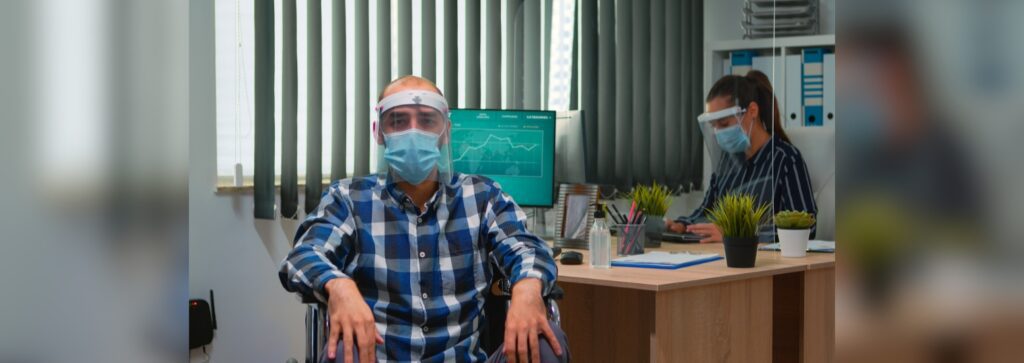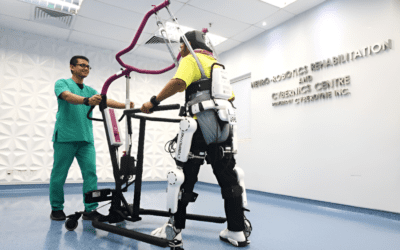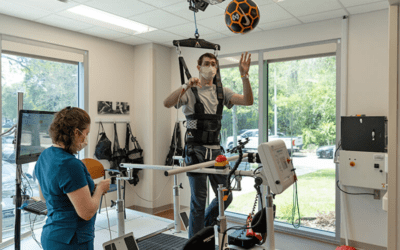Brain injury rehabilitation has seen remarkable advancements in recent years, thanks to the integration of cutting-edge technologies. The introduction of innovative devices and therapies is not only enhancing recovery outcomes but also offering a more personalized approach to treatment.
Here’s a closer look at how these innovations are reshaping the landscape of brain injury recovery.
Exploring Cutting-Edge Technologies in Brain Injury Recovery

Recent breakthroughs in Neurotechnology and rehabilitation have led to the development of devices that help patients regain cognitive and physical functions. Technologies like Neurostimulation devices, brain-computer interfaces (BCIs), and virtual reality (VR) have shown great promise in enhancing neuroplasticity—the brain’s ability to reorganize itself and form new neural connections. These technologies enable the brain to recover from trauma by encouraging reactivity in damaged areas, often bypassing the injured parts of the brain.
- Neurostimulation: Devices that use electrical impulses to stimulate specific areas of the brain can improve motor functions and cognition. One such device, transcranial direct current stimulation (tDCS), has been found to promote the regeneration of brain cells and improve cognitive abilities in individuals with brain injuries.
- Brain-Computer Interfaces (BCIs): These systems enable direct communication between the brain and external devices, allowing patients with severe injuries, like paralysis, to control computers or prosthetics using their thoughts alone.
- Virtual Reality (VR): VR environments are increasingly used to simulate physical and cognitive activities. These immersive experiences help patients practice motor skills, balance, and memory tasks in a controlled environment, which is crucial in rehabilitation.
The Impact of Wearable Devices on Rehabilitation Outcomes – Rehabilitation Technology
Wearable devices are significantly improving rehabilitation outcomes by providing continuous, real-time data to therapists and patients. Devices like smartwatches, exoskeletons, and wearable sensors are not only helping monitor progress but also facilitating tailored interventions.
- Smartwatches and wearable sensors: These devices can track a patient’s vital signs, movement patterns, and cognitive performance, enabling more effective and data-driven rehabilitation plans. For example, patients recovering from brain injury can wear a device that tracks their gait or balance, providing clinicians with insights to adjust therapy.
- Exoskeletons: Wearable robotic suits that assist with movement are helping individuals regain mobility after brain injuries. These devices are especially effective in patients who have suffered from a stroke or spinal cord injury, aiding in their ability to walk and perform tasks that were previously impossible.
These wearable technologies in rehab help to bridge the gap between therapy sessions, ensuring that patients can continue their rehabilitation outside of traditional clinical settings and thereby promoting consistent progress.
Personalized Approaches: Tailoring Rehabilitation to Individual Needs
One of the key advantages of these innovative technologies is the ability to offer personalized rehabilitation plans. Brain injury recovery is highly individualized, with each patient presenting unique challenges. Personalized rehabilitation considers factors like the severity of the injury, the location of brain damage, the patient’s pre-injury health, and their emotional well-being.
- Tailored therapy plans: Devices that track data allow therapists to create customized rehabilitation programs that adapt over time based on the patient’s recovery. For instance, a BCI might adjust its stimulation parameters based on a patient’s brain activity, while virtual reality exercises can be altered to fit the cognitive and motor abilities of each patient.
- Data-driven decisions: By collecting data on movement, cognitive performance, and emotional states, healthcare providers can fine-tune therapeutic strategies to provide the most effective care. This allows for precise interventions that promote faster and more efficient recovery.

Success Stories: Transformative Results from Innovative Devices – Patient outcomes in Brain Injury
Numerous success stories demonstrate the life-changing impact of innovative devices on brain injury recovery. These success stories highlight not only the progress of individuals but also the transformative power of technology in rehabilitation.
- The Case of “Jane” – Cognitive Recovery through Neurostimulation: A patient named Jane, who suffered from a traumatic brain injury after a car accident, had difficulty with memory and concentration. She participated in a rehabilitation program that included tDCS. Over several months, Jane showed significant improvement in her cognitive skills and her ability to perform daily tasks, such as managing her finances and driving.
- “Mark’s” Journey with a Brain-Computer Interface: Mark, who had been paralyzed following a stroke, regained some independence through the use of a BCI device. After undergoing months of therapy, he was able to control a prosthetic limb and operate a computer, performing simple tasks like sending messages and browsing the web. This was a monumental achievement for Mark, who had previously been unable to perform even basic movements.
- Using Virtual Reality for Stroke Rehabilitation: A stroke survivor named Maria used a VR rehabilitation system that simulated real-world tasks such as grocery shopping or cooking. The immersive experience helped Maria regain fine motor skills and improve her balance. She made substantial progress in regaining her independence and now participates in community activities.
These transformative success stories underscore how the convergence of technology and rehabilitation is not just speeding up recovery but also improving the quality of life for individuals with brain injuries.
Conclusion
Assistive devices for brain injury are indeed revolutionizing brain injury rehabilitation/recovery by offering more personalized, effective, and efficient treatments. From Neurostimulation and wearable sensors to brain-computer interfaces and virtual reality, these cutting-edge technologies are changing the way patients recover, providing them with the tools and support they need to regain functionality and independence. With continued advancements and success stories, the future of brain injury rehabilitation looks brighter than ever.
Cognitive rehabilitation tools, such as brain-training apps, virtual reality, and Neurostimulation devices, help patients regain cognitive functions affected by injury or illness. These tools offer personalized exercises to improve memory, attention, and problem-solving skills, aiding in brain injury recovery.



